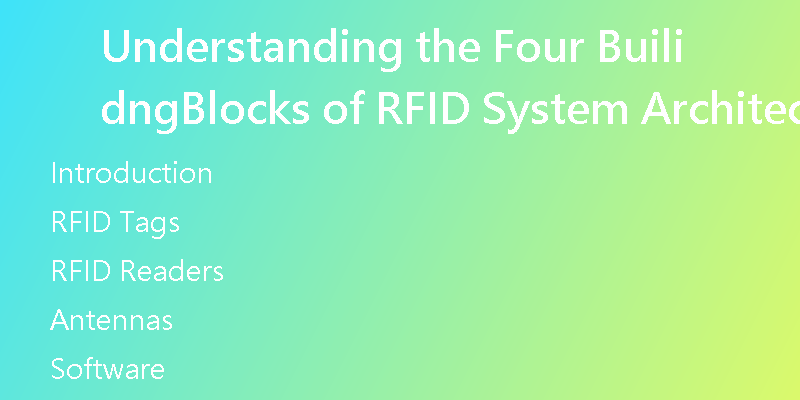Understanding the Four Building Blocks of RFID System Architecture
Introduction

RFID (Radio Frequency Identification) technology has revolutionized the way businesses operate by automating processes and improving efficiency. To understand how RFID systems work, it is important to grasp the four fundamental building blocks that constitute the architecture of an RFID system. In this article, we will delve into each of these building blocks, shedding light on their significance and role in RFID technology.
RFID Tags
The RFID tag is a crucial component of any RFID system. It consists of a microchip and an antenna encased in a small package. RFID tags are responsible for storing and transmitting data wirelessly to the RFID reader. These tags come in various forms, including active and passive tags. Active tags have their own power source, allowing for longer read ranges and continuous transmission. Passive tags, on the other hand, do not have their own power source and rely on the energy emitted by the RFID reader to transmit data.
RFID Readers
RFID readers are devices that communicate with RFID tags, capturing data and forwarding it to a computer system for further processing. RFID readers emit radio waves that activate passive RFID tags within their range. They then receive the response signals sent by the RFID tags, decoding the information stored within them. These readers can be fixed or handheld, depending on the specific requirements of the application. RFID readers play a vital role in data collection and enable real-time visibility and tracking of assets, inventory, and personnel.
Antennas
Antennas serve as the interface between the RFID reader and RFID tags. They transmit and receive radio frequency signals, facilitating communication between the RFID reader and the tags. Antennas come in various shapes and sizes, with different designs and features catering to specific application needs. Depending on the desired read range and coverage area, antennas can be adjusted to optimize performance. The proper placement and configuration of antennas are crucial for maximizing the effectiveness of the RFID system.
Software
Software forms a vital part of the RFID system architecture as it enables the collection, processing, and analysis of data obtained from RFID tags. RFID software can be divided into two components: middleware and application software. Middleware acts as a bridge between the RFID hardware, such as readers and tags, and the enterprise system, facilitating data transfer and integration. Application software provides the necessary tools and interfaces for managing and utilizing the data collected by the RFID system. This software enables businesses to make informed decisions, optimize operations, and enhance overall efficiency.
Conclusion
Understanding the four building blocks of RFID system architecture is essential for businesses looking to leverage RFID technology to streamline operations and enhance efficiency. RFID tags, readers, antennas, and software collectively form an integrated system that enables real-time tracking, automation, and data-driven decision-making. By adopting RFID technology and harnessing its potential, businesses can gain a competitive edge, improve supply chain visibility, and achieve operational excellence.


